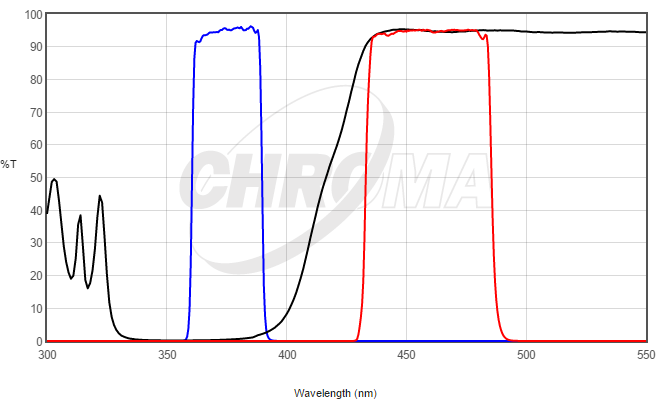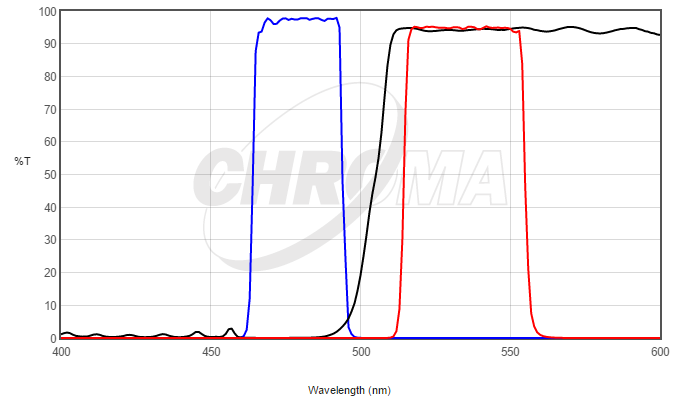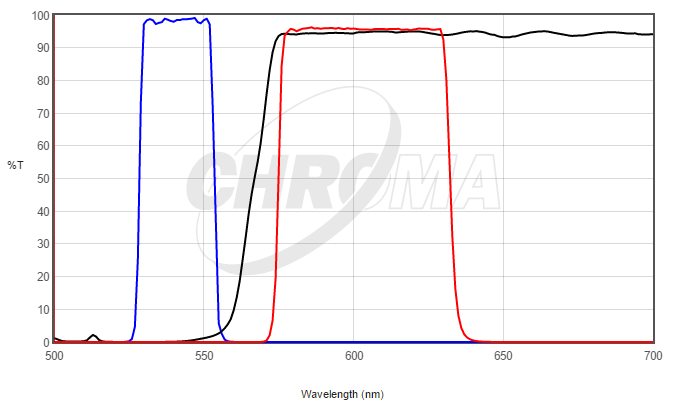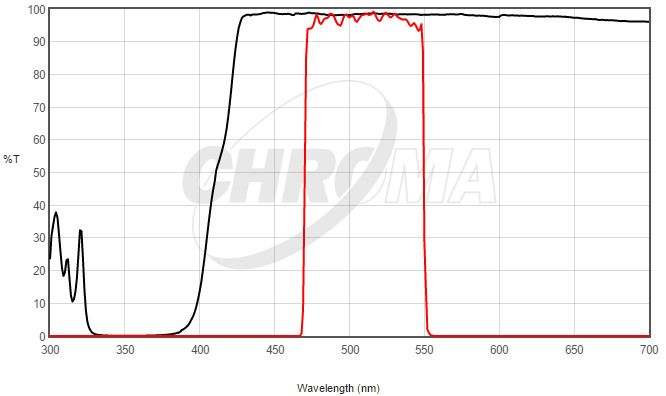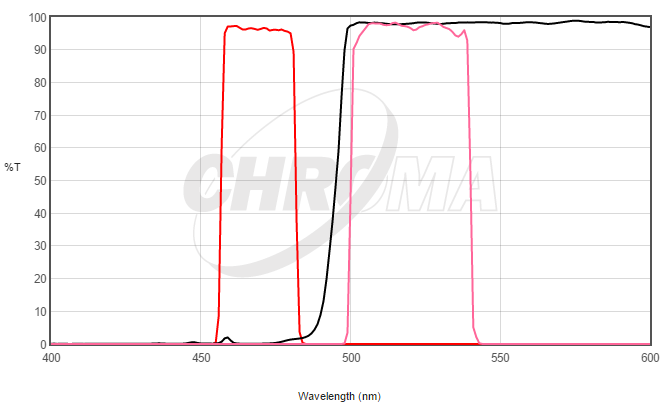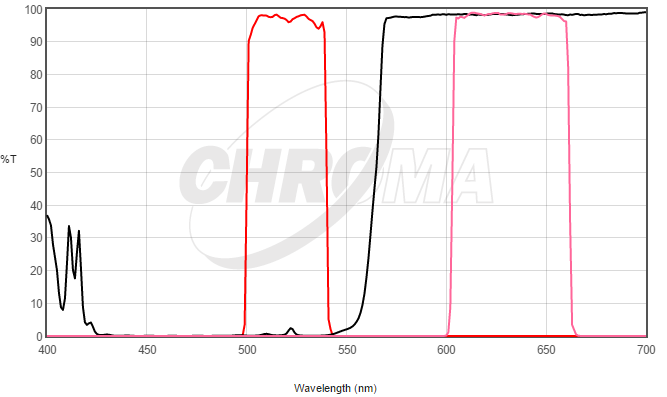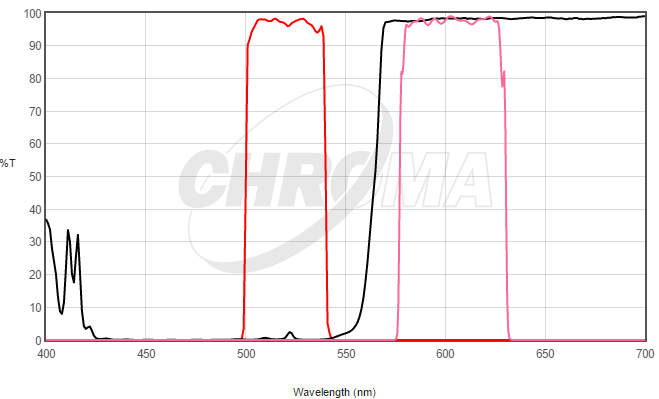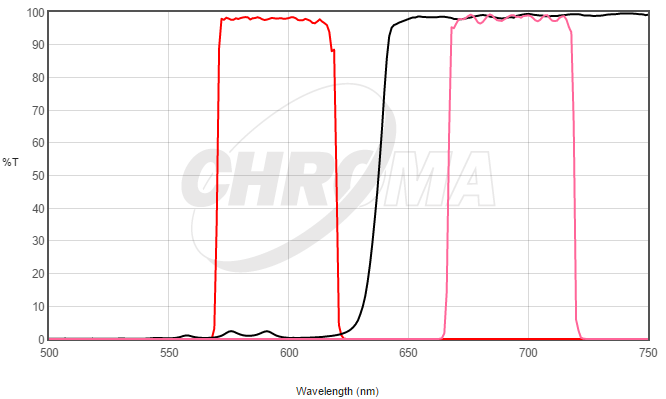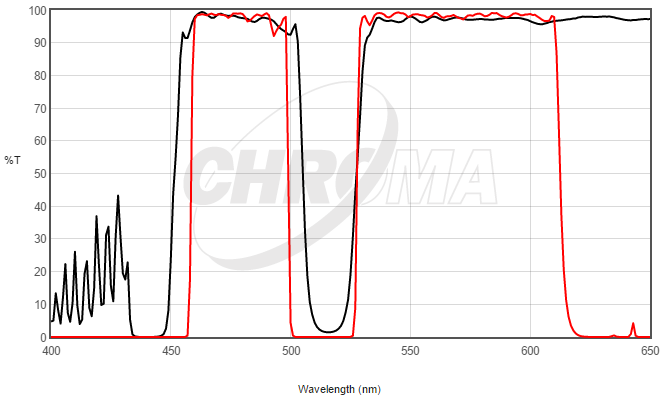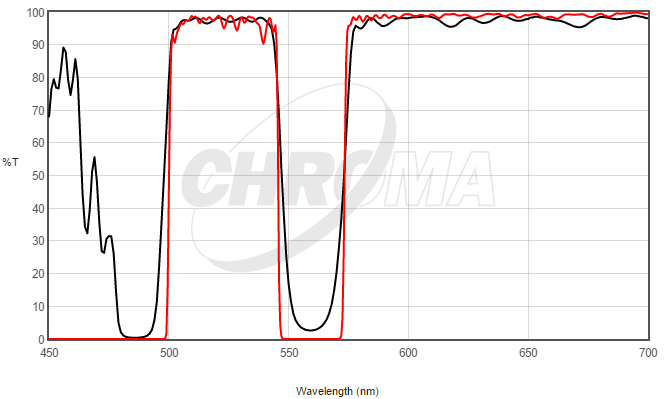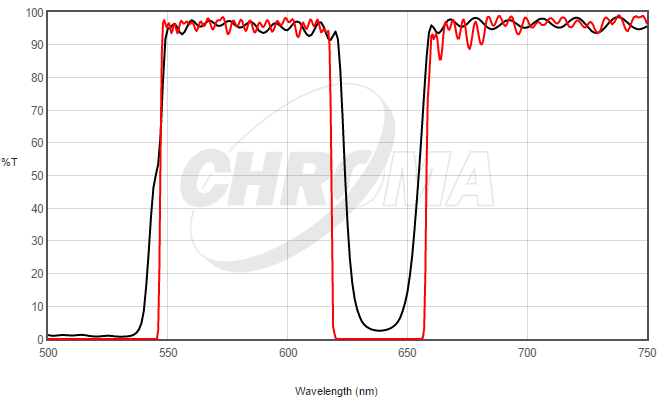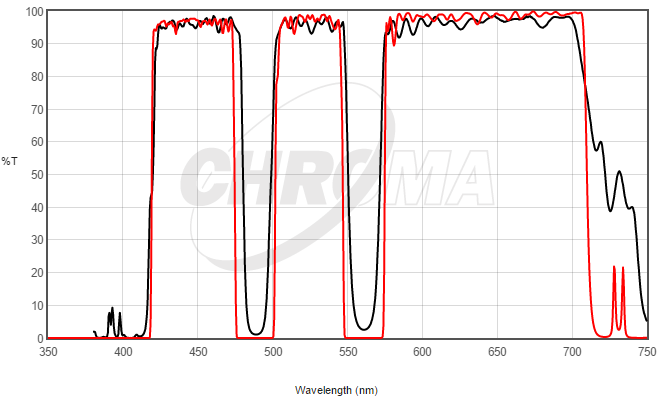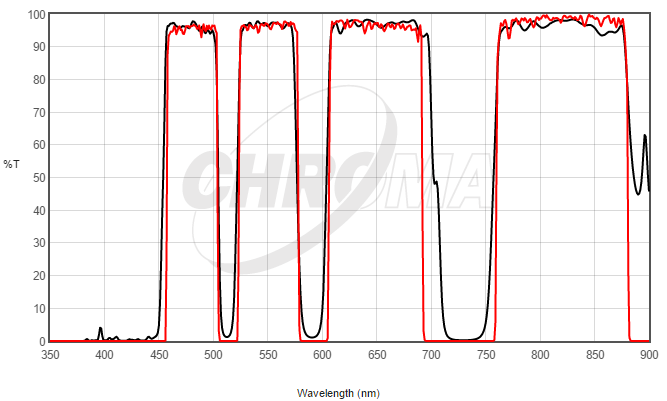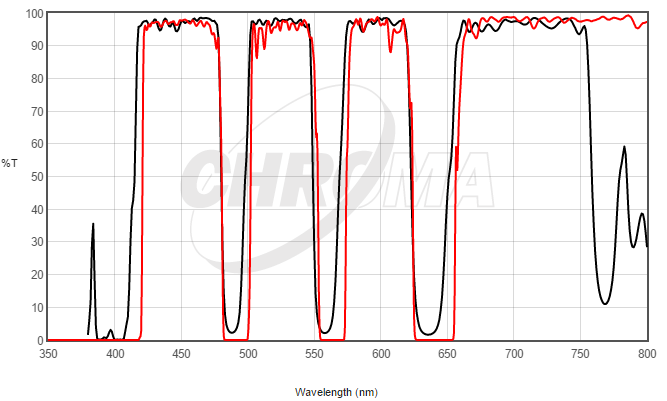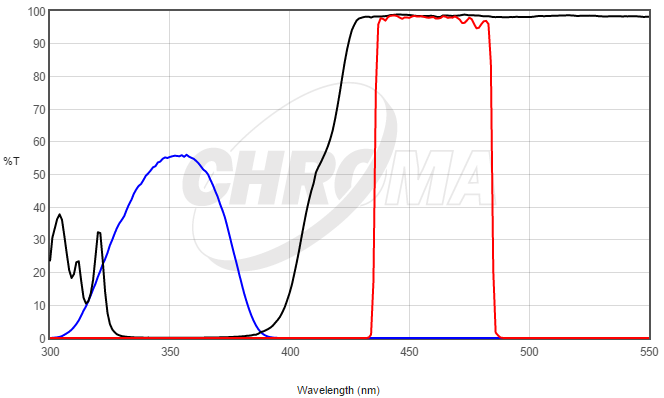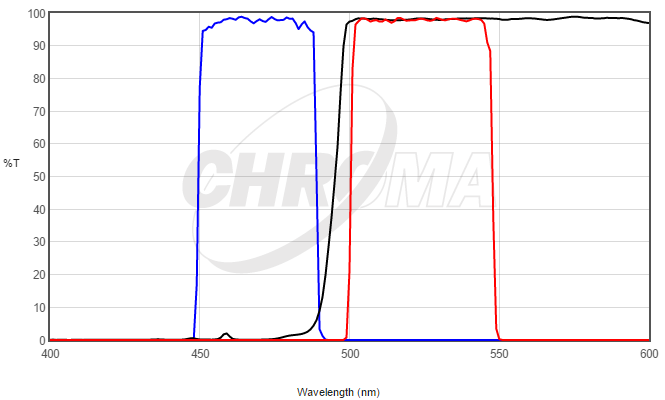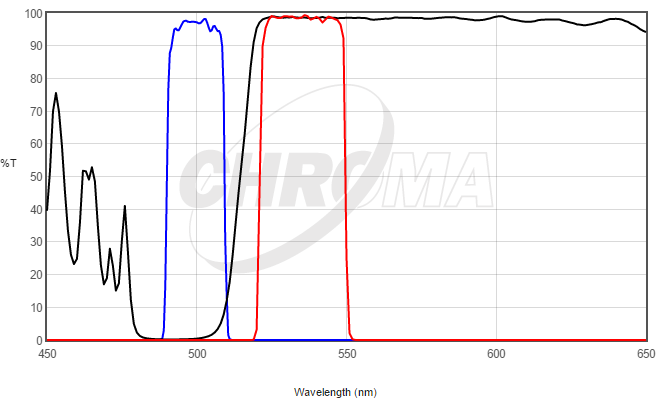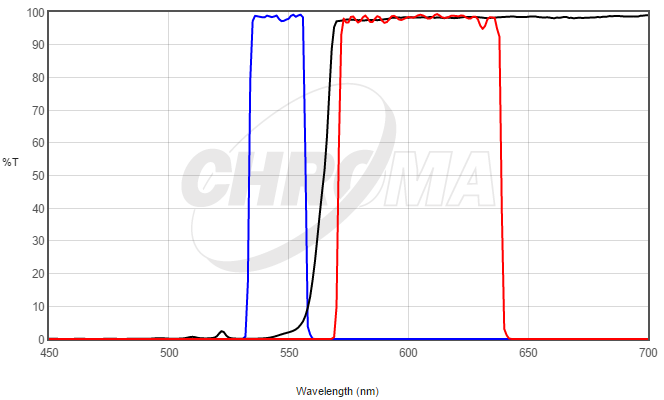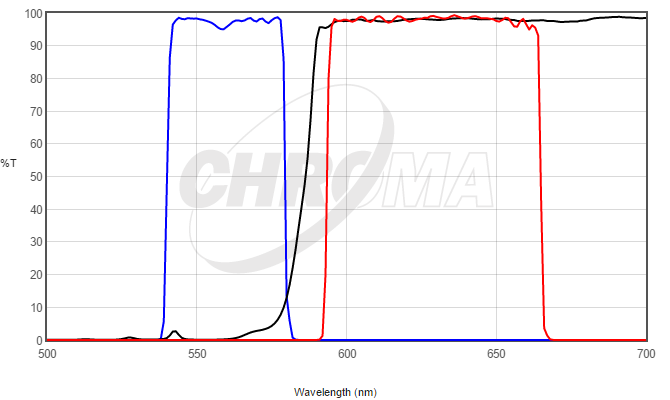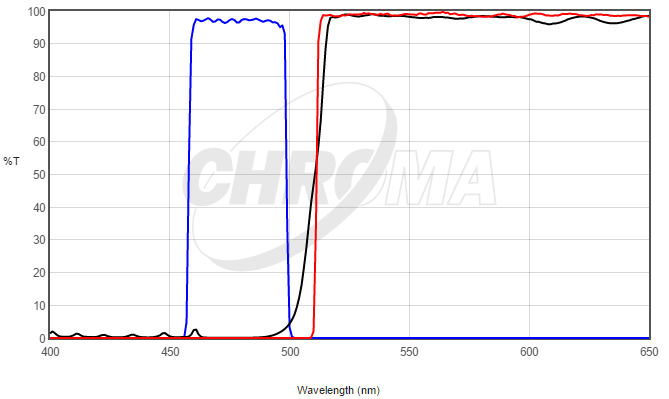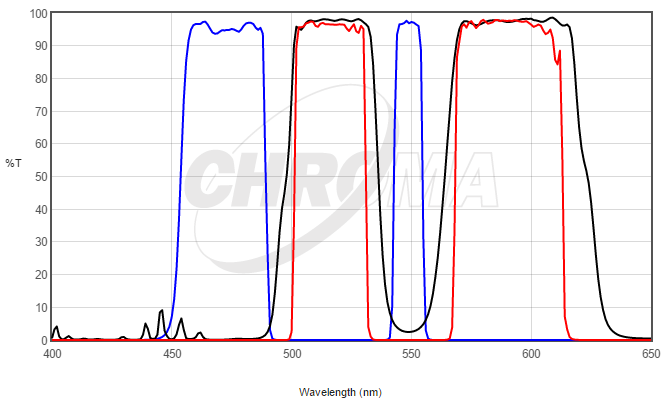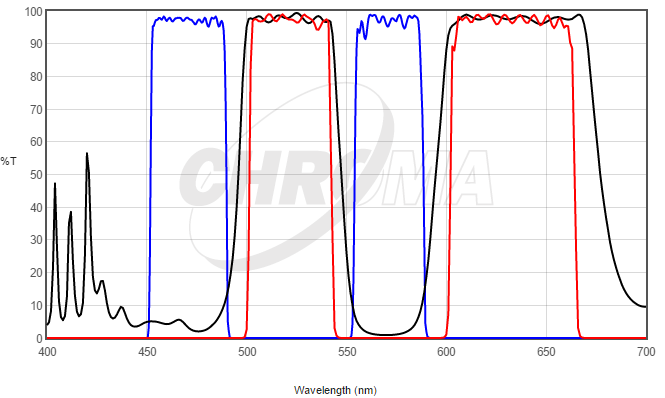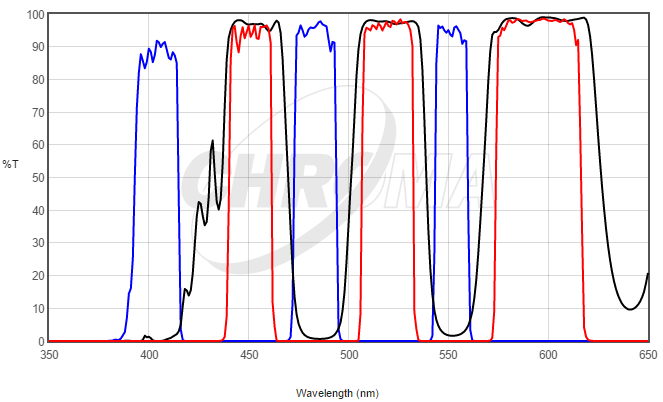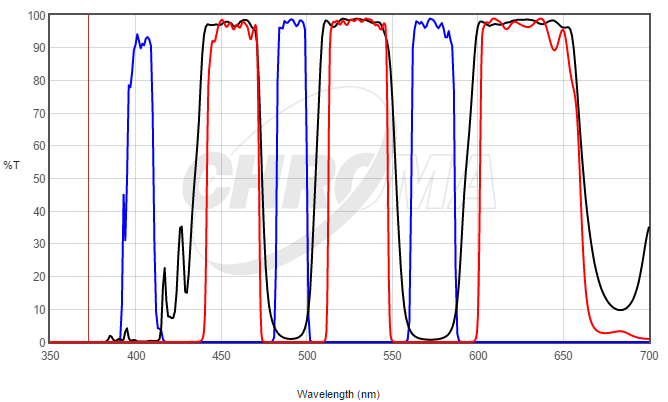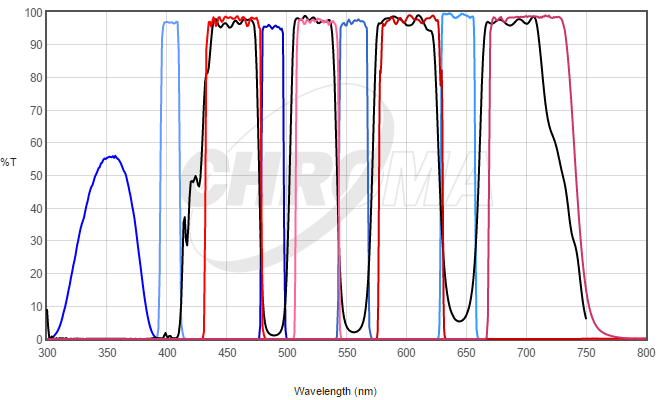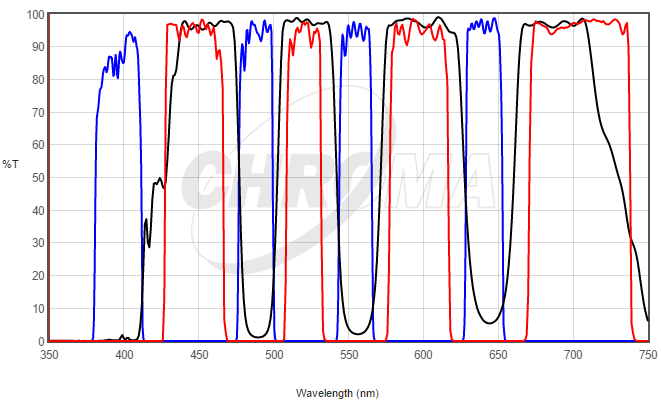Every photon is potentially precious, but nevertheless there are some that you don’t want anywhere near your sample or your detectors! Or maybe you want different photons to end up in different places, whatever that may actually mean. The goal of course is to conserve as many as possible of the photons that you do want, while rejecting as many as possible of the ones you don’t. This brings us to the fascinating world of filters and beamsplitters, where, thanks to the ingenuity of people like our friends at Chroma Technology, almost anything is possible.
The same applies to beamsplitting components, which are generally but incorrectly referred to as “dichroic mirrors”, or just “dichroics” for short. Dichroism actually refers to polarisation dependence, which is something you don’t want for many applications, although many “dichroics” do inadvertently live up to their name by their wavelength-dependence also varying somewhat with polarisation! But here again the performance can be improved by careful design, as Chroma have also done here.
Beamsplitters work by transmitting some wavelengths and reflecting others, so they are effectively wavelength- and/or polarisation-dependent switches. As referral to the Chroma website will show, beamsplitters with multiple transmissive and reflective wavebands have been devised for a variety of specific applications, and as they share Cairn’s passion for “tinkering”, they are likely to respond positively to any suggestions for yet further variants!


